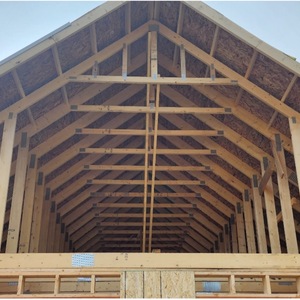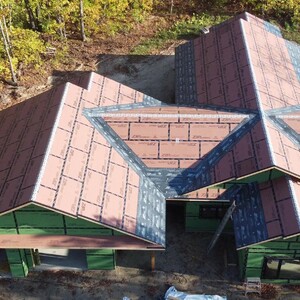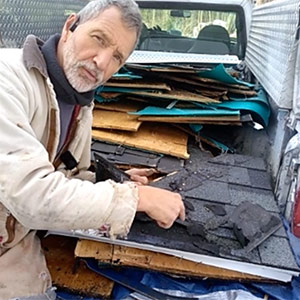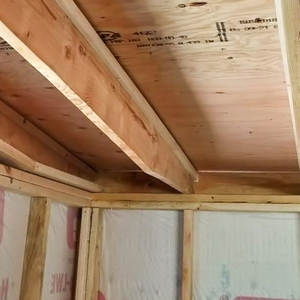
This detail illustrates a broken pitch–roof eave at the ceiling joist and exterior wall intersection. A broken pitch is an aesthetically driven roof design. Coupled with a 24-in.-deep eave, the roof appears to be floating above the wall, which gives it the look some people like. Here, the 8:12 pitch of the main roof suits the colonial style of the house from which this detail derives; halving that pitch to 4:12 creates the swooping effect at the end of the eave.
The main roof has 2×10, 16-in.-o.c. wood framing. Typically, the rafter would extend to complete the eave but because the aim was a broken pitch, the rafter was plumb cut to be in plane with the exterior face of the exterior wall. The rafter is a 2×6, 16-in.-o.c. outrigger set at a 4:12 pitch that extends 24 in. to frame the top half of the eave. The bottom of the eave integrates a 2×6, 16-in.-o.c. horizontal soffit, and these three components create the frame for the broken-pitch roof.
The clients wanted conditioned attic space for mechanicals and storage, which led to an unvented roof assembly. Regional practices informed the decision to use 2 in. of closed-cell spray foam insulation on the underside of the roof sheathing. Note that the spray foam extends to the top of the top plate, just inside the lateral blocking at the rafter. The rafter cavity was insulated with an R-30 mineral wool batt.
To maintain a consistent thermal boundary up the exterior walls and across the roof rafter assembly, the 2×6 exterior wall was flashed with 2 in. of closed-cell spray foam from top plate to ridge board, which provides an enhanced level of airtightness while elevating the temperature of the first condensing surface in the attic; the stud cavity was filled with an R-15 mineral wool batt. Of course, many in the green building industry want to avoid closed-cell spray foam. An alternative method is to use an insulated sheathing, like Zip, and fill the cavity with a blown-in or batt insulation.
_________________________________________________________________________
Alexandra Baczek is an associate at Steven Baczek Architect. She is a graduate with a Master of Architecture from Roger Williams University. Illustration by the author.
Weekly Newsletter
Get building science and energy efficiency advice, plus special offers, in your inbox.















3 Comments
Is 2" of closed cell spray foam enough on the roof? Martin's article says for zone 5 you need R-20, and in zone 6 R-25.
https://www.greenbuildingadvisor.com/article/five-cathedral-ceilings-that-work
I'm also curious about the transition between roof pitches. No flashing is shown on the section.
The grey area in the picture is rockwool batts (R-30)
Ihc,
I'm concerned about the thickness of the foam necessary to stop condensation, not the overall R value of the roof.
Log in or create an account to post a comment.
Sign up Log in